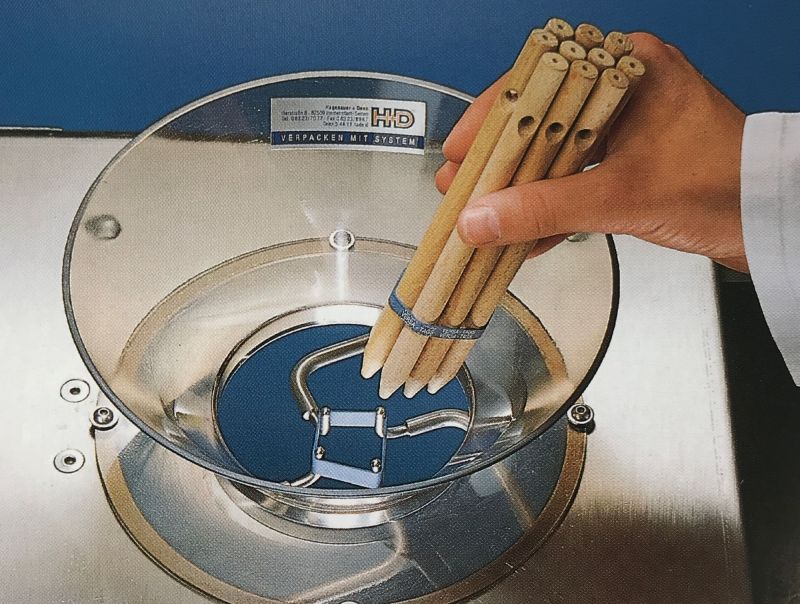Bundle products automatically with rubber bands
Manual spreading of rubber rings is time-consuming and can lead to carpal tunnel syndrome in the operator. With very strong rubber bands, manual spreading is no longer possible. For this reason, there is a great need for automated application of elastic bands.
Semi-automatic solutions are available at relatively low cost. However, they require a single rubber ring to be manually applied to the spreading fingers. The rubber ring is then stretched mechanically or pneumatically. When the product is inserted, a sensor is activated which closes the spreading fingers. When the product is removed, the rubber ring is simply slipped off the fingers.
Fully automatic solutions are technically much more complex. In practice, the challenge is to feed a single rubber ring to a spreading device at the exact time and position so that it can be automatically clamped. A single ring cannot be automatically removed from a loose quantity of rubber rings. In practice, a rubber ring is therefore freshly cut from the hose for each application. Such fully automatic machines are considerably more expensive and are only economical with a high throughput rate. One example of this is asparagus packaging. As a bunch of asparagus has to be bundled at both ends, 2 automatic bundling machines are arranged opposite each other. The bundles are fed horizontally past the applicators at one-second intervals.
More information on our rubber bands?
On our product overview page you will find further interesting details.









